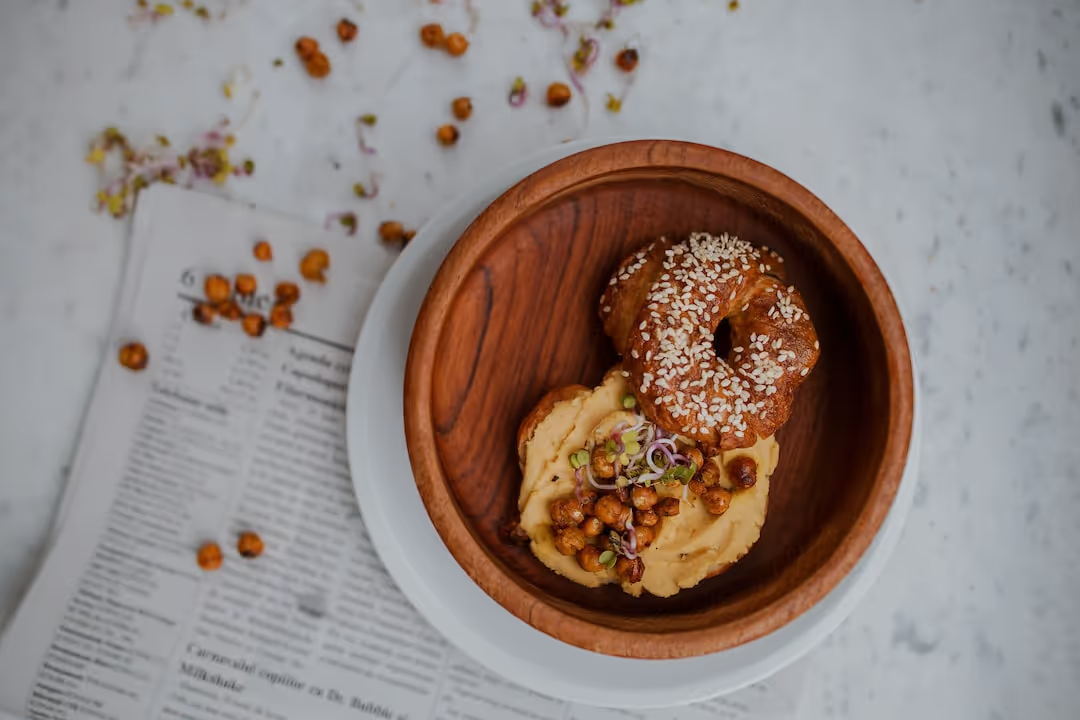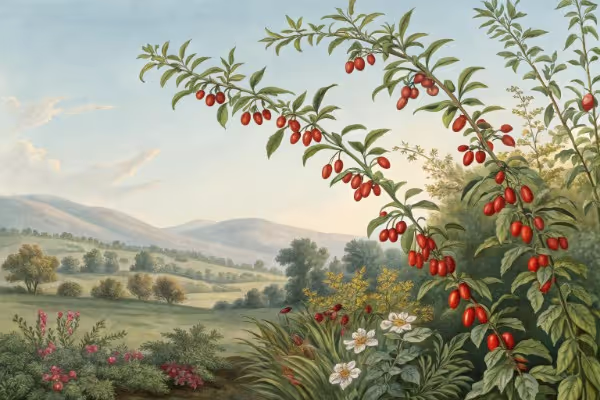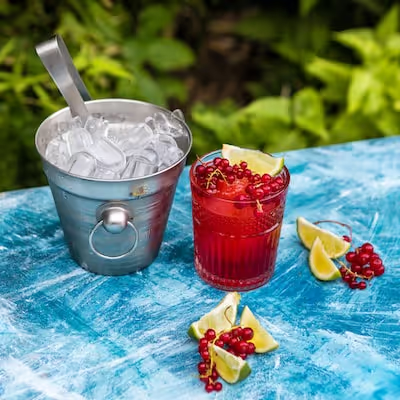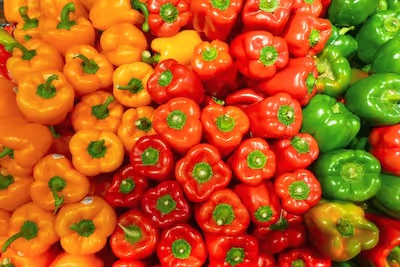Growing Chickpeas: Your Simple Step-by-Step Garden Guide

Growing Chickpeas
Growing chickpeas rewards gardeners who plant in full sun, well-drained soil, and cooler weather. Start by sowing chickpea seeds directly outdoors in early spring, spaced 3 to 4 inches apart and 1 inch deep. Keep the soil lightly moist, and in about 100 days, you'll harvest pods filled with nutritious, protein-rich beans ready for salads, hummus, or roasting. Read on for detailed steps on planting, watering, and harvesting your own delicious chickpeas.
Cheatsheet: Chickpea Planting & Harvesting Made Easy
🌱 Best Time & Place
Plant after last frost—soil 70°F+ (21°C+). Give full sun, loose, well-drained soil, pH 6.0–7.0.
🌾 Sowing Steps
- Sow seeds 1 inch (2.5 cm) deep, 3–6 inches (8–15 cm) apart.
- Row spacing: 18–24 in (45–60 cm).
- No thinning needed—chickpeas grow bushy.
💧 Water & Care
- Water regularly, keep soil evenly moist.
- Reduce watering 2 weeks before harvest.
- Avoid wet foliage; chickpeas dislike humidity.
🦠 Disease & Pest Avoidance
- Rotate crops yearly; low disease risk.
- Watch for aphids, leaf miner. Use row cover if needed.
🌞 Feeding & Mulching
- Skip heavy fertilizing; fix their own nitrogen.
- Mulch thinly to hold moisture, suppress weeds.
⏳ Harvesting
- Ready in 90–100 days or when pods dry and brown.
- Pull plants, dry for 2–3 days, shell pods.
🛠️ Tools and Products You'll Need
- Chickpea seeds (organic, untreated)
- Trowel
- Watering can or hose
- Mulch (e.g., straw)
- Garden gloves
- Row marker or string
🥗 Nutrition & Self-Sufficiency
Chickpeas pack protein, fiber, iron, folate. 1 cup = ~15g protein. Homegrown, shelf-stable for months.
-
Growing Chickpeas: Your Simple Step-by-Step Garden Guide
I grow chickpeas for flavor first, yield second, and the soil smiles afterwards. Growing Chickpeas fits neatly between spring chill and high summer heat.
Why chickpeas belong in your beds
They stitch nitrogen into the ground, shrug at dry spells, and cook like a dream. The plants stay compact, so they suit raised beds and tight gardens.
FAOSTAT reports global chickpea production topping 15 million metric tons in recent years, with India producing well over half of the crop. Source: FAOSTAT, 2021 data.
Timing and climate
Chickpea is a cool-season legume that handles light frost once established, yet it sets pods best in mild, dry weather. I sow as soon as soil hits 50 to 60 F, 10 to 15 C, then aim to finish flowering before high humidity rolls in.
Target daytime temps near 70 to 80 F, 21 to 27 C, for steady growth. Fall sowing also works in mild-winter zones, given good drainage and disease-resistant seed.
Soil prep that pays off
They dislike soggy feet, so I loosen soil 8 inches, 20 cm, and mix in compost for tilth, not for nitrogen. Aim for pH 6.0 to 8.0, slightly alkaline soils are fine.
Skip high-nitrogen fertilizer. Too much N pushes leaves over pods.
Inoculation, explained
Use a chickpea inoculant with Mesorhizobium ciceri to colonize roots and form nodules. In gardens without recent chickpeas, inoculation saves you from mediocre growth.
I shake seed with a little water and powder until evenly coated, then sow immediately. Store inoculant cool and dry.
Seed spacing and sowing
- Plant depth: 1 to 1.5 inches, 2.5 to 4 cm, slightly deeper in sandy beds. Shallow seed dries and stalls.
- Spacing: 4 to 6 inches, 10 to 15 cm, in-row, with 18 to 24 inch, 45 to 60 cm, row spacing. I do twin rows on a 30 inch, 76 cm, bed.
- Water in with a single thorough soak. Then keep the surface slightly moist until emergence.
- Thin early if needed, crowded plants trap humidity and invite disease.
Kabuli vs desi types, and what to buy
Kabuli types carry large, beige seeds and a creamy bite, good for hummus and roasting. Desi types have smaller, darker seeds and deeper flavor, often earlier and tougher in rough weather.
- Kabuli: ‘CDC Frontier’, ‘Sierra’, ‘Sanford’ for larger seeds and broad adaptability.
- Desi: ‘Myles’, ‘Black Kabuli’ style lines for spice-forward dishes and sturdy plants.
Look for certified disease-free seed and varieties with Ascochyta blight resistance. Extension trial reports help, and they are worth the read.
Watering without trouble
After establishment, irrigate deeply but infrequently. I run drip every 7 to 10 days in dry spells, then back off at pod fill to discourage foliar disease.
Avoid overhead watering during bloom and pod set. Dry leaves sleep better at night.
Nutrition and growth habit
Side-dress only if plants yellow between veins, use a light, balanced organic feed. Nodulation takes a few weeks, so early pale color can be normal as roots partner with bacteria.
Most chickpeas are semi-erect and self-supporting. A low mesh or string along the row keeps them tidy in wind.
Disease and pest playbook
Ascochyta blight thrives in cool, wet spells and splashing rain. Use resistant varieties, long rotations of 3 to 4 years, wide spacing, and drip irrigation.
Watch for aphids, cutworms, and pod borers. I scout twice weekly, knock back early aphid colonies with a firm water jet, and use row cover at emergence where cutworms chew.
Remove and bin infected plant parts. Do not compost blighty stems.
Flowering, pod set, and heat
Flowers are self-pollinating, so bees help but are not required. Prolonged hot nights over 75 F, 24 C, can reduce pod set, so early sowing pays in warm regions.
Green harvest vs dry harvest
For fresh green chickpeas, pick plump pods 60 to 75 days from sowing, they eat like nutty peas. I blanch and toss with olive oil, lemon, and salt, simple and perfect.
For dry seed, wait until plants turn tan and pods rattle. Pull whole plants, then finish drying under cover until seeds crack under a fingernail.
Curing, threshing, storage
Hang or lay plants on screens for 7 to 14 days in a warm, airy space. I thresh in a clean bin with a short stick, then winnow with a box fan.
Dry to about 12 to 13 percent moisture for storage. Airtight jars in a cool cupboard keep flavor for a year.
Yields you can expect
In my beds, 10 feet, 3 m, of healthy plants usually gives about 1 to 1.5 pounds, 450 to 700 g, of dry chickpeas. Green harvest trims final yield, but the snacks are worth it.
Crop rotation and companions
Give chickpeas a 3 to 4 year break from other legumes to blunt soilborne disease. Follow them with leafy greens, brassicas, or heavy feeders that enjoy the nitrogen lift.
Dill, cilantro, and calendula play nice at row edges, they invite beneficial insects and do not crowd the canopy.
Common problems, quick fixes
- Plants flop: wind or lush growth, add a low line, reduce nitrogen, increase sun.
- Yellow leaves: early nodulation lag, wait two weeks, or add a light foliar seaweed feed.
- Few pods: heat or humidity during bloom, move sowing earlier, increase airflow, choose earlier varieties.
- Spots on leaves: possible Ascochyta blight, prune, space plants, switch to drip, seek resistant lines.
Top varieties for home gardens, by goal
- Best for hummus: ‘CDC Frontier’, ‘Sierra’.
- Best for roasting: ‘Sanford’, large Kabuli types with uniform size.
- Earliest harvest: compact desi types like ‘Myles’ in short seasons.
- Dry-climate beds: desi lines with small seeds and tough foliage.
Tools and supplies I actually use
- Chickpea-specific inoculant, fresh dated, stored cool, matched to Mesorhizobium ciceri.
- Drip line with 12 inch, 30 cm, emitters for dry leaves and steady moisture.
- Floating row cover for early cutworm and aphid pressure, remove at flowering if needed.
- Stackable drying racks or wire shelves for clean curing under cover.
- Moisture meter or simple jar test to judge seed dryness before sealing jars.
Kitchen-side perks that shape how I grow
Fresh green pods go straight to the pan, and dry beans soak fast when new-crop. I save a jar of the largest seed as next year’s planting stock, selected from the best plants.
Regional tweaks I have learned
- Humid summers: plant early, widen spacing to 8 inches, 20 cm, stake lightly, and favor resistant varieties.
- Arid heat: mulch lightly after establishment, water deep, and sow a touch deeper for cooler germination.
- Short seasons: start in-cell trays for 2 weeks at 60 F, 15 C, then transplant carefully to avoid root shock.
A quick science note, without the lab coat
Those pink root nodules signal active nitrogen fixation. Slice one open, if it is pale or green, the bacteria are loafing and the plant may need a little help.
Seed saving
Chickpeas self-pollinate, so saving pure seed is easy. Dry fully, label by variety, and store cool for 3 to 5 years of good vigor.
Reliable references and data sources I trust
- FAOSTAT, global pulse production statistics, 2021 snapshot for chickpea tonnage and regional shares.
- UC Agriculture and Natural Resources, chickpea production notes on Ascochyta blight, irrigation, and rotation.
- Washington State University Extension, pulse crop guides on disease avoidance in cool, wet springs.
- ICARDA, agronomy and varietal performance of chickpea in dryland systems.
- USDA SARE and ATTRA, farmer-facing guides on inoculation and legume nitrogen management.
Frequently Asked Questions About Growing Chickpeas
What soil conditions suit chickpea cultivation best?
Chickpeas thrive in well-drained, loamy soils with a neutral to slightly alkaline pH, ideally between 6.0 and 7.5. Amend heavy clay or sandy soil by incorporating organic compost prior to planting to foster healthy root development.
How much sunlight do chickpea plants require?
Ensure your chickpea crop receives a full 6 to 8 hours of direct sunlight daily. Sunlight energizes the plant's growth cycle, promoting vigorous foliage and pod development.
How often should chickpeas be watered?
Maintain regular, moderate irrigation, providing around 1 inch (2.5 cm) of water weekly. Avoid excess moisture to prevent fungal diseases—ensure the soil retains dampness but not waterlogging.
What is the best planting time for chickpeas?
Plant chickpeas after the final frost in spring, once the soil temperature consistently registers at least 50°F (10°C). Chickpeas prefer temperate, dry conditions, and a planting window in early to mid-spring optimizes yield.
Can chickpeas grow in containers?
Yes, chickpeas grow successfully in containers, provided sufficient space and drainage exist. Select a container measuring at least 12 inches (30 cm) in diameter and depth, filled with nutrient-rich potting mix and adequate drainage holes.
How can pests and diseases affecting chickpeas be managed organically?
Manage common pests like aphids or leafhoppers by introducing beneficial insects, such as ladybugs, or applying neem-oil-based organic sprays. Rotate chickpea planting locations annually and practice proper spacing to reduce fungal issues like Ascochyta blight.
When are chickpeas ready to harvest?
Chickpeas typically mature about 90 to 110 days after sowing. Harvest once pods turn dry, rigid, and yellowish-brown. Shake the pods lightly—ready chickpeas will rattle inside, indicating optimal dryness for harvest.
Growing chickpeas pays off in more ways than one. These humble plants ask for sun, well-drained soil, and a little patience. Give them that, and you’ll harvest nutty, protein-rich pods fit for any kitchen. Rotate your crops, water with care, and keep weeds in check—chickpeas don’t ask for much, but they reward attention. If you’re looking to expand your garden’s bounty, azuki beans or bean sprouts are worth a try alongside your chickpeas. At the end of the season, you’ll find that a little effort brings a pantry full of flavor and substance. Keep it simple, stay observant, and let the plants show you what they need. That’s the real secret to growing chickpeas.
Organic Grower's Advanced Chickpea Cultivation Practices
Beneficial Companion Planting
- Calendula: Attracts pollinators, deters aphids.
- Radishes: Repel cucumber beetles, improve soil aeration.
- Cucumbers: Provide shade cover, reducing moisture loss during hot periods.
- Nasturtiums: Trap cropping aphids away from chickpeas.
Natural Soil Fertility Enhancements
- Seaweed Extract: Apply foliar spray at seedling and flowering stages; rich in trace minerals.
- Worm Castings: Incorporate handful per planting hole to boost beneficial microbes.
- Bone Meal: Phosphorus-rich amendment for enhanced flowering and pod formation.
Effective Water Conservation Strategies
- Drip Irrigation Lines: Reduce soil evaporation, save up to 60% water usage.
- Organic Mulch Layer: Straw or pine needles maintain consistent soil moisture, suppress weeds.
- Rain Harvesting Barrels: Collect runoff water; chickpeas thrive with occasional deep watering rather than frequent shallow soaks.
Integrated Organic Pest Management
- Neem Oil Application: Spray every 10–14 days to prevent fungal diseases and insect infestation.
- Beneficial Insect Release: Introduce ladybugs and lacewings to naturally control aphid populations.
- Row Covers: Protect young plants from leafhopper attacks without pesticide.
Harvest & Nutritional Boosting Techniques
- Early Morning Harvest: Retain higher nutrient content by harvesting during cool morning temperatures.
- Soil Testing: Annual tests optimize essential minerals—average chickpea yield increase of 20% with balanced nutrients.
- Immediate Drying: Sun-drying chickpeas promptly after harvest reduces mold risk and preserves protein quality.
Find out which plants will thrive in your garden!
Answer a few fun questions and get custom plant recommendations perfect for your space. Let’s grow something amazing together!

start your season





